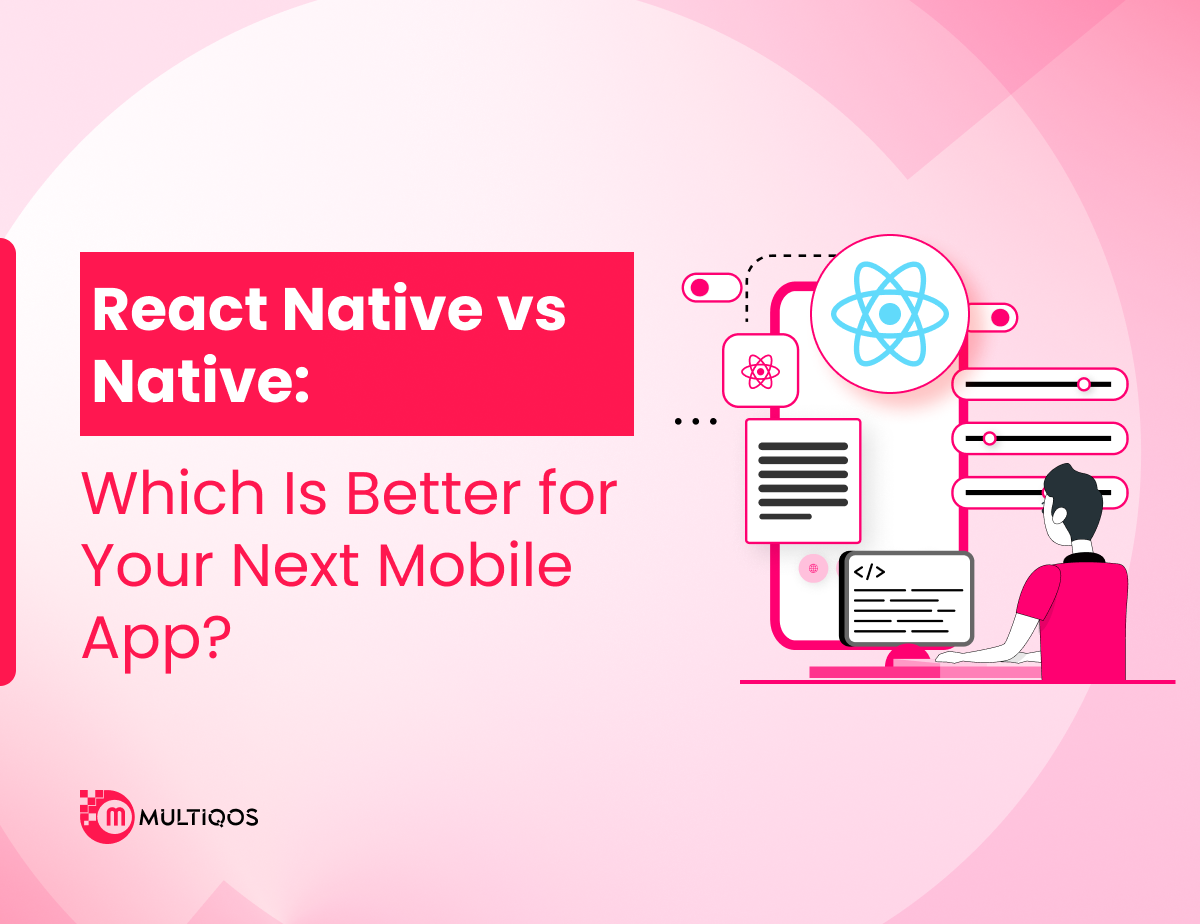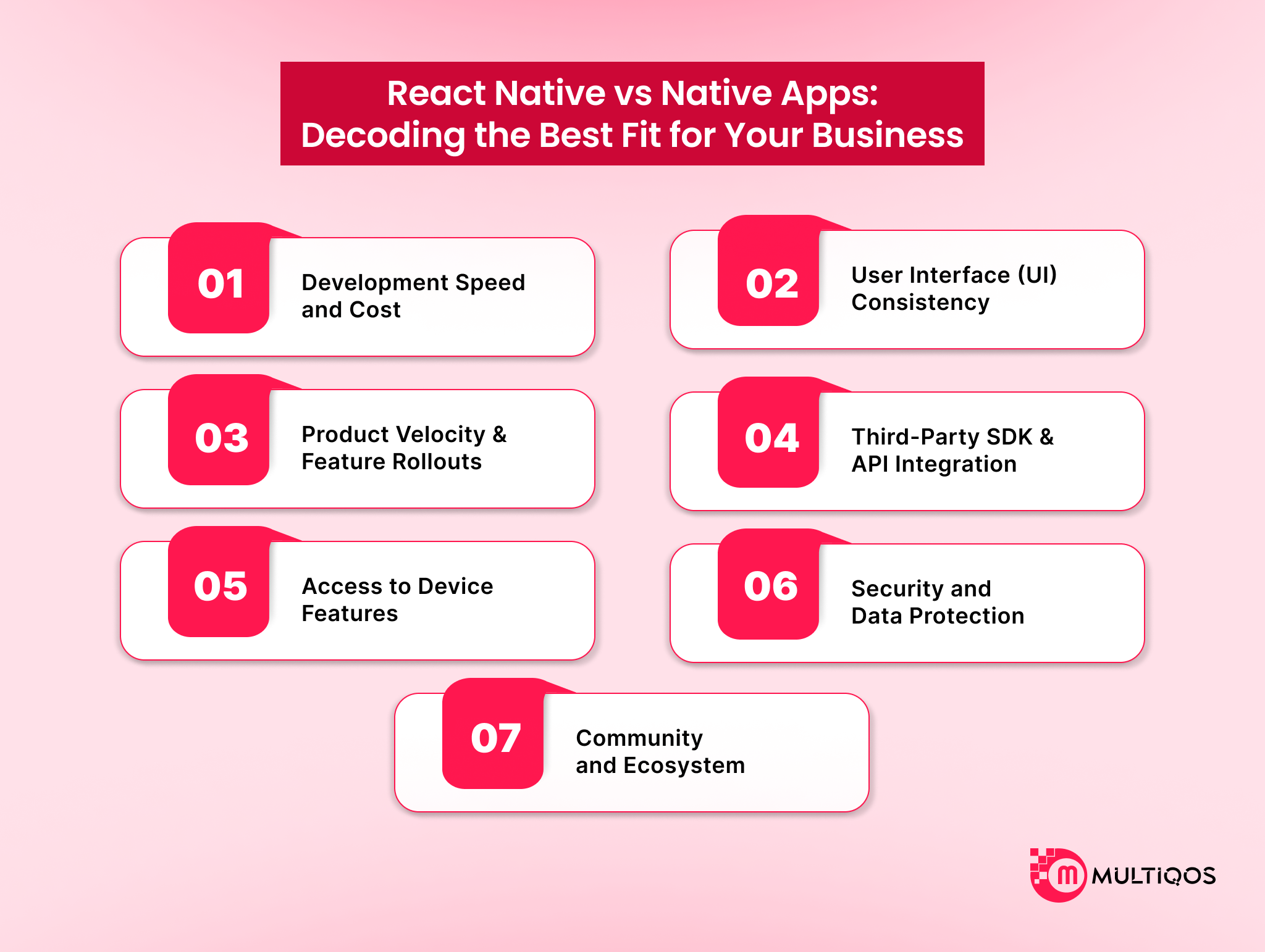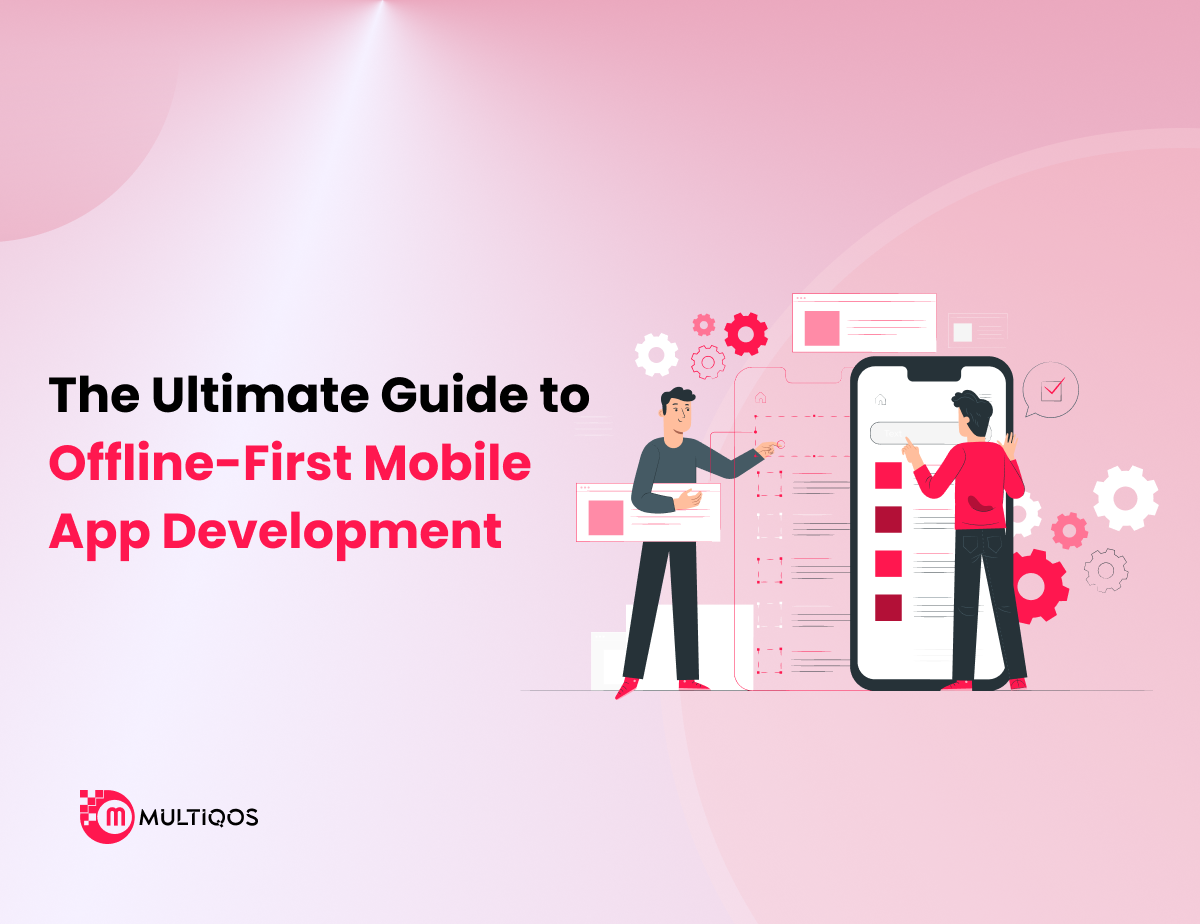React Native vs Native: Which Is Better for Your Next Mobile App?

Table of Content
Summary:
When planning your next mobile app, the debate of React Native vs Native development is key to making the right choice. This blog compares both approaches, highlighting differences in performance, development speed, cost, user experience, and scalability. React Native is known for its cross-platform capabilities, allowing developers to use one codebase for both iOS and Android, which can save time and money.
In contrast, Native development provides better performance and deeper access to device-specific features, making it ideal for complex or high-performance apps. By exploring the pros and cons of each, this article helps you determine whether React Native or Native development is the right fit for your mobile app project. Make an informed decision with this comprehensive guide.
Introduction
When it comes to building your next mobile app, the choice between React Native vs Native is not just a technical decision; This can create or break the success of your project. React Native promises the opportunity to write a code base on both iOS and Android, which appeals to startups and teams to save time and resources.
On the other hand, Native offers unmatched performance, deeper access to device-specific features, and a smooth user experience, often preferred for complex high-performance applications. Knowing the strengths and limitations of each approach is necessary to prepare an app that not only works but also thrives in today’s competitive market. Let’s help you decide which way is best suited for the vision and goals of your app in the battle of React Native vs Native.
What is a React Native Application?
A React Native application is a mobile app that can be deployed across multiple platforms, created using JavaScript and React. This allows developers to create a single codebase that works on both iOS and Android, offering a native experience with rapid growth and low costs. Features such as hot reload of the development process make it a popular alternative for companies willing to accelerate time-to-market.
With the increasing demand for mobile solutions, React Native is a cost-effective alternative for many industries. To ensure high-quality apps, companies often seek professional React Native development services to ensure optimal performance, scalability, and a spontaneous user experience.
What is a Native Application?
A native application is a mobile app specially designed for a single platform, either iOS or Android, using platform-specific programming language such as Swift or Objective-C for iOS, and Kotlin or Java for Android. Because they are designed for a specific operating system, the native apps have full access to device features, offering the best performance, responsibility, and user experience.
The native apps are ideal for apps that require intense integration with high performance, complex animation, or device hardware. Although they usually take more time and resources to develop, as each platform requires a separate code base, they provide unmatched credibility and adaptation. Many companies choose Native development when execution and user experience are top preferences.
React Native vs Native Apps: Decoding the Best Fit for Your Business
When deciding between React Native and Native apps, there are many important factors to consider. Each approach provides its own set of benefits, and the ideal option depends on your business goals, available resources, and preferences. A reliable mobile app development company can help you evaluate these elements to make an informed decision to fit your needs. Let’s find out the most important ideas in the React Native vs Native debate.
1. Development Speed and Cost
React Native allows you to write a code base for both iOS and Android, which increases growth. The ability to use a shared code base reducesthe repetition of the effort and reduces costs. Furthermore, since React Native uses JavaScript, it is easy to scale with a large pool of developers who are familiar with the language, making it more cost-effective for budget or timelines.
On the other hand, Native apps require a separate codebase for iOS and Android, which leads to slow growth. Each platform requires its own development team, which adds to the time and resources of the project. This repetition of the effort can also make the update longer. In addition, the cost of maintaining two different apps increases costs, both for initial growth and long-term maintenance.
2. User Interface (UI) Consistency
With React Native, it can be a challenge to obtain a completely consistent user interface on both platforms, even if it uses native components. Adaptation is often necessary to address platform-specific behavior and aesthetic differences. While the performance is close to the Natives, some complex user interfaces and animations may not always be easy.
However, native apps stand out in UI stability. They strictly follow the platform-specific design guidelines and ensure a native, spontaneous experience for users. This is the result of a spontaneous UI/UX that works on iOS or Android. In addition, Native apps can benefit from platform-specific user interface patterns, leading to high user satisfaction.
3. Product Velocity & Feature Rollouts
One of the biggest benefits of React Native is quick iterations and updates. Because you just need to update a codebase, you can rollout features or bugs at the same time, fixing on both platforms. This product speeds up cycles and helps bring new features to the market quickly. In addition, the hot reporting facility for React Native developers will see the app immediately without restarting, and create tests and responses quickly.
With Native apps, updates and feature rolls take longer because they are to be used separately for iOS and Android. Any function or error correction used only on a platform requires further development, which can reduce the total product speed and complicate the update process.
4. Third-Party SDK & API Integration
React Native has made significant advances in third-party SDK and API support, but it still has limitations. Although it has an increasing plug-ins, not all third-party services are fully compatible. For some integration, it may be necessary to create developers to create customized solutions or broken technologies to ensure functionality on both platforms. In addition, some third-party equipment can perform better on a platform, which requires platform-specific adjustment.
Native apps have full access to the SDK and APIs designed specifically for each platform. This gives them an advantage when integrating them with third-party services, as the equipment is fully adapted to each operating system. Native apps also have low compatibility problems and can easily benefit from platform-specific features and services.
5. Access to Device Features
While React Native can access most device functionalities, it may have limitations when it comes to more advanced functionalities, such as Bluetooth, augmented reality (AR), or background processing. React can cross these boundaries by using a native module or by constructing bridges to interact with the original code, but it adds complications and can delay development. On the other hand, Native apps have direct access to all unit facilities and system APIs.
This allows them to utilize advanced hardware features fully, such as the latest camera features, AR, or detailed location services. Native apps also tend to provide better performance, especially for resource-heavy functions such as gaming or high-end graphics, as they interact directly with devices for devices.
6. Security and Data Protection
While React Native provides cutting-edge security facilities, it cannot match the security level found in native apps for some sensitive tasks, such as advanced encryption or secure data storage. Shared codebase for both platforms also means that if it is weakened in one platform can affect the other until further security measures are implemented for each.
Native apps benefit from the underlying security facilities of iOS and Android. These include hardware-supported encryption, safe storage, and powerful security structures designed for each platform. The original apps can integrate deeply with platform-specific security tools, which can make them a safer option, especially for apps that handle sensitive user data, such as financial or health information.
7. Community and Ecosystem
React Native benefits from a large and growing open-source ecosystem, supported by a vibrant JavaScript society. With the agents of plugins, libraries, and development tools, it makes it easier to produce apps across platforms for React Native developers. Since a third-party package can still have errors or incomplete properties, there can sometimes be limits.
On the other hand, Native apps enjoy a more mature and especially ecosystem. Both iOS (through Apple’s developer society) and Android (via Google’s ecosystem) provide extensive resources for developers. The native development communities provide rich documentation, special tools, and support that can be important for dealing with complex platform-specific challenges.
React Native vs Native Apps: Which Should You Choose?
When Should You Choose React Native Apps?
- You need to create apps for both iOS and Android with a single codebase, saving time and effort.
- You have a limited budget or a small team and want to reduce the cost of development and maintenance.
- You prioritize rapid growth cycle, quick feature rollouts, and simple updates.
- You will benefit from the JavaScript developer community, which provides a large talent pool and a giant ecosystem.
- You do not need deep or complex access to device-specific features such as AR, Bluetooth, or intensive animation.
When Should You Choose Native Apps?
- You will need a maximum screen, especially for graphics-heavy apps such as games or AR/VR experiences.
- Your app depends on advanced hardware features or platform-specific functionality (eg, camera technology, background service).
- You prioritize highly polished UX/UX and adjust perfectly with the iOS or Android design guidelines.
- You need advanced safety and data security, such as safe storage and encryption frameworks.
- You want to check the app’s behaviour after prolonged platform optimization of the app.
Popular Apps Developed Using React Native And Native App Development
Many popular and giant apps across industries are designed using either React Native or Native App Development, which demonstrates the strength of both approaches. Here’s a look at some well-known examples:
1. Facebook
As a creator of React Native, Facebook uses it a lot in its own app to manage complex features on platforms with shared codes.
2. Netflix
While Netflix mainly uses Native development for the main app, it also uses React Native for its internal units and parts of the interface, which benefit from rapid iterations.
3. Bloomberg
Bloomberg’s mobile application, also known for delivering business and financial news, is designed with React Native to ensure a smooth user experience in iOS and Android devices.
4. Instagram
Instagram integrated React Native in its existing native app to speed up the time for development and maintain smooth user interactions.
5. Uber Eats
Although it is mainly designed with Native techniques, Uber Eats uses React Native for specific features of the app to streamline updates and improve functionality across platforms.
Conclusion
To develop your next mobile app, the choice between React Native vs Native depends on the specific requirements, timelines, and budgets of your app. If you are looking for rapid growth, cost-effectiveness, and compatibility across platforms, React Native is a strong challenger, especially if you plan to hire React Native developers who can quickly bring your vision to life.
However, if your priority is to perform at the top, spontaneous integration with unit functions and the best possible user experience, Native development is unparalleled. Understanding these trade-offs will help you make an informed decision and set your mobile app for success. Whether you choose React Native or Native, keeping the right development team to work with is important to convert your idea into a powerful, functional app.
FAQs
React Native enables rapid growth because you can write a single codebase for both iOS and Android. However, Native development provides greater speed and adaptation as it uses platform-specific languages, and the unit can fully benefit from hardware and functions.
We specialize in creating high-performance, mobile apps across platforms using React Native, so you can target both iOS and Android with a single codebase. From problems and design to development and deployment, we handle all aspects of the app development process.
We can build a wide range of mobile apps using React Native, including:
- E-commerce apps
- Social networking apps
- On-demand service apps
- Enterprise solutions
- Entertainment and media apps
- Fintech apps
If you have a unique app idea, we can help bring it to life using React Native.
The development deadline may be different based on the complexity of your app. However, with React Native, we can usually distribute raw applications compared to traditional growth, as we benefit from a shared codebase. We will work with you to define a clear timeline depending on the requirements for your project.
It’s easy to start! Just contact us with your app idea, and our team will plan an initial consultation to understand your needs. We will then give you a detailed project plan, timeline, and cost estimate to bring your imagination to reality.
Get In Touch








